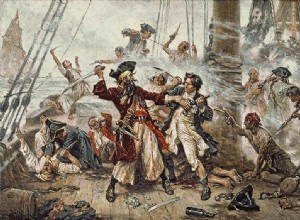A common mistake that is customary to make when talking about the piracy of the sixteenth, seventeenth and eighteenth centuries, is to put in the same bag, for example, Sir Francis Drake , Henry Morgan and Edward Teach Blackbeard . What would the first, a noble marine loyal servant of Queen Elizabet




